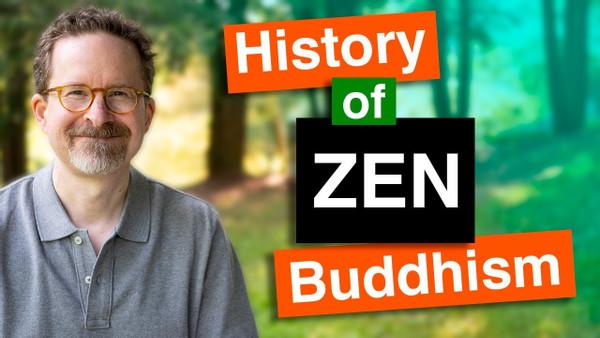History of Zen Buddhism: Paradox and Tension
Curated from: Doug's Dharma
Ideas, facts & insights covering these topics:
4 ideas
·980 reads
11
Explore the World's Best Ideas
Join today and uncover 100+ curated journeys from 50+ topics. Unlock access to our mobile app with extensive features.
The Flower Sermon & Beginning of Zen
The history of Zen starts with myths and legends. The starting legend for Zen is the flower sermon:
"Toward the end of his life, the Buddha took his disciples to a quiet pond for instruction. But Buddha had no words. He instead he held a flower silently before them.
None but Mahakasyapa understood. He smiled and began to laugh. Buddha handed the lotus to Mahakasyapa and he became Buddha’s successor."
This direct transmission of wisdom (with no words and abstract concepts) serves as the foundation of Zen.
20
385 reads
Bodhidharma, the father of Zen
Bodhidharma was a semi-legendary Buddhist monk who lived during the 5th or 6th century. He was of Indian origin, but moved to China, where he is said to have been meditating for 9yrs straight.
Some of stories involving him are similar to more modern koans.
- He tells to the emperor he is not impressed with his Buddhist based policies and when asked "Who are you to question the king?" he replied "I don't know".
- His disciple is also awakened suddenly after a paradoxical conversation about the nature of mind.
20
183 reads
Zen, Chinese Taoism embracing Indian Buddhism
The beginnings of Zen can be traced to India in the 3rd century when we have a school called Buddha Nature, which claimed that Buddha's emptiness is a gift we all share. That Buddha's nature is a connecting force between all that exists.
The practice found a lot of traction in China through monks like Bodhidharma. The reason is that the interconnectedness the Buddhists were talking about matches the Tao, the connective substance, which is the basis of Taoism (one of the main Chinese schools of thought alongside Confucianism). From China, it moves to Japan, where the Zen name comes from.
22
224 reads
2 Entrences to Zen
Zen builds upon core Buddhist philosophy. One reaches Zen in 2 ways:
- through principle: understanding that we are all of Buddha-nature, underneath the world ignorance. The problem is conceptual: our ideas and thoughts are mediated by ignorance.
- through practice: without practicing. Because once you get involved in the practice you elevate the ego.
Zen is really suspicious of concepts, words, etc. To get to the bottom of it one has to eliminate all words. To clear the mirror of our minds and let the dormant Buddha-nature shine.
22
188 reads
IDEAS CURATED BY
Life-long learner. Passionate about leadership, entrepreneurship, philosophy, Buddhism & SF. Founder @deepstash.
Vladimir Oane's ideas are part of this journey:
Learn more about personaldevelopment with this collection
How to choose the right music for different tasks
The benefits of listening to music while working
How music affects productivity
Related collections
Similar ideas
7 ideas
Jordan Peterson's Guide to Speaking
Dose of Truth
3 ideas
How to study when you feel unmotivated ✨ *3 easy tips*
Janice Studies
3 ideas
John Vervaeke on the Meaning Crisis & the Search for Wisdom
Lex Fridman Podcast
Read & Learn
20x Faster
without
deepstash
with
deepstash
with
deepstash
Personalized microlearning
—
100+ Learning Journeys
—
Access to 200,000+ ideas
—
Access to the mobile app
—
Unlimited idea saving
—
—
Unlimited history
—
—
Unlimited listening to ideas
—
—
Downloading & offline access
—
—
Supercharge your mind with one idea per day
Enter your email and spend 1 minute every day to learn something new.
I agree to receive email updates



